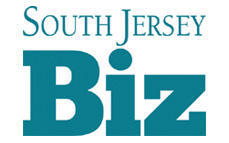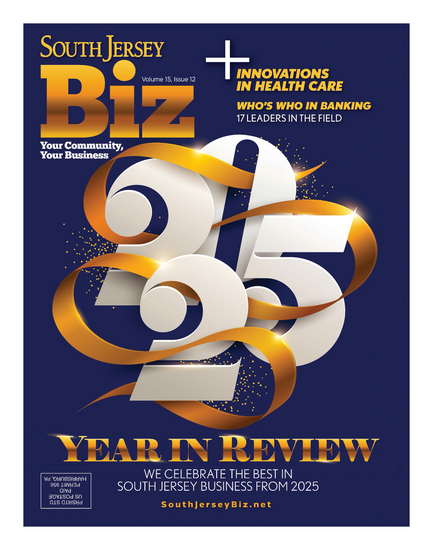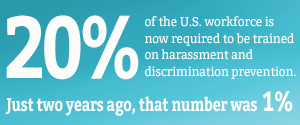
As a longtime communications professional with experience in everything from branding, marketing and media relations to teaching at Rowan University, Rick Alcantara has always placed a great deal of importance on authenticity. The field has changed drastically throughout his varied career, he explains, from the days of pasting up a newsletter to using social media and now artificial intelligence to deliver a professional message, but the one constant is the need to be sincere, no matter which tool or platform is being used.
“[Technology is] really having an impact on public relations, marketing and advertising,” he says. “People are going to be able to do some of this stuff themselves, but I still think they need somebody who’s a professional communicator to do some of the work for them. Just because you can type some words into ChatGPT, it doesn’t make you a writer and it doesn’t make you a marketer. There are some great tools there, but use them with caution if you’re not in communications. If you’re not authentic, people are going to see right through it and they’re going to take their business someplace else.”
Alcantara, a Washington Township resident, is the president of the Philadelphia chapter of the International Association of Business Communicators (IABC). The nonprofit organization provides professional development opportunities such as conferences, seminars, classes and more to those in corporate, internal, crisis and marketing communications.
His No. 1 piece of advice for companies looking to communicate effectively in today’s landscape is to “walk the walk.” In other words, don’t just recite certain platitudes, but actually back them up by conducting business in an ethical manner.
“Your mission statement, your vision, your values—they need to be articulated and they need to be embodied in everything you do,” he says. “Your mission statement needs to be something more than what you hang on the wall. Companies like Ben & Jerry’s or Patagonia or Apple have stellar reputations because they really do live up to the standards that they set and articulate.”
Communication, whether external or internal, has become a difficult task for companies of all sizes despite the fact that they have more avenues than ever to connect with employees, partners, customers or potential clients. Stephanie K. Reed, the president of the New Jersey chapter of the Public Relations Society of America (PRSA), warns that it’s important to be mindful of a number of factors, including the intended audience.
“If we’re not strategic about how we use these different pathways, it can create information overload and inconsistent messaging, and for both the senders and receivers of communication, that can lead to fatigue,” she says. “Particularly for people on the receiving end, it can make it tough to differentiate what’s meaningful. On one hand we have email, text messages, instant messaging, social media, video—those are all quick and convenient ways to connect, but nothing can replace face-to-face connections. They require more coordination, but they’re really impactful in terms of building relationships, because it’s in those spaces that nuances like tone, body language and verbal cues give you a complete layer of depth to what’s being expressed and understood.”
Similar to the IABC, the PRSA provides professional development and networking opportunities for its members and allows for best practices to be shared. Reed, who previously worked in a communications leadership role at Rutgers and currently runs her own consulting firm, believes there are myriad benefits to becoming involved, including learning ways to improve the chain of communication internally for companies, particularly across various departments and multiple generations of employees.
“In today’s workforce, we have an unprecedented span of people from six generations,” she says. “We can use that as an opportunity to capitalize on the situation and develop messages and find ways to communicate that literally resonate with people from 18 to 80.” She adds that it’s important to conduct research in order to understand the behaviors and preferences of each generation.
“There are some generations that are much more comfortable communicating via text, even in professional settings, where other generations would never even consider doing something like that. As PR and communications professionals, we need to keep in mind that both sets of needs and all in between can be met—we just have to know who it is we’re speaking to and what they’re looking for.”
For Alcantara, communication is vital to ensuring employee satisfaction, although he feels it’s often an overlooked part of business. He advises employers to have an open-door policy, to conduct surveys or focus groups, and above all else, to listen to their employees.
“Employees want to be heard, they want to be recognized for the work they do, and they want to have the tools to do the job that you’re asking them to do,” he says. “If you can provide those three things, your employees will be more engaged. If employees feel that nobody is listening, that nobody is going to recognize their achievements and that they have to work with one hand tied behind their back, then guess what? They’re going to head out the door.”
Customers who are not satisfied with their experience also have ways to voice their displeasure, particularly through social media. If companies are not careful, negative attention can build and cause serious damage to the bottom line. It’s critical to listen to customer complaints and investigate whether any steps need to be taken to remedy the situation.
“It starts with understanding what the issue is, responding promptly and being very transparent about what’s occurring so that we can then take action appropriately,” Reed says.
PRSA recently centered an event around disinformation and the responsibility of PR teams to overcome false narratives. Another common challenge for today’s communication professionals is weighing the risks and rewards of taking a stance on social issues, which is the topic for an upcoming IABC event.
In a time of dissension across the country and heated discourse on a variety of hot-button issues, brands can take a hit when seeming to take one side over the other.
“I think it’s very timely because the elections are coming up and companies are in this situation where they’re trying to decide whether they should speak out on politics, on DEI, on all kinds of issues,” Alcantara says. “They get it from both sides, and whether they do speak up or they don’t speak up, are people going to create a furor at the next shareholder meeting? Most companies tend to be reactive when any kind of crisis strikes, whether it’s a natural disaster, insider trading, a product recall or whatever. Instead, the alternative way and the preferred way would be to have a crisis response plan in place.”
With a crisis response plan, organizations can determine the proper messaging they want to convey, who will speak for the company in times of turmoil, and how to coordinate with members of the media, law enforcement and government regulators, Alcantara explains.
“All of those things need to be thought of ahead of time, because if you don’t, the crisis can spiral and get out of hand very quickly,” he says. “You also could insert your foot in your mouth and make the crisis even worse. So by having this plan in front of you, this template for what you would say and do, it’s going to shorten that cycle of crisis and provide you the guidelines as to how you should respond.”
Click here to subscribe to the free digital editions of South Jersey Biz.
To read the digital edition of South Jersey Biz, click here.
Published (and copyrighted) in South Jersey Biz, Volume 14, Issue 10 (October 2024).
For more info on South Jersey Biz, click here.
To subscribe to South Jersey Biz, click here.
To advertise in South Jersey Biz, click here.








